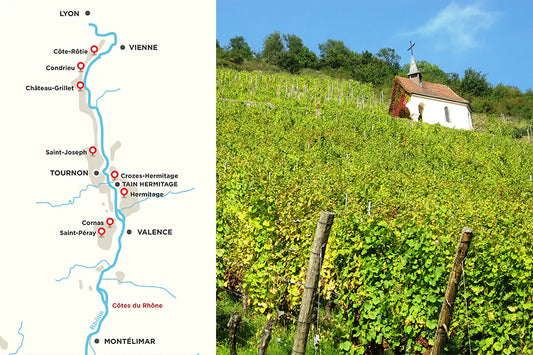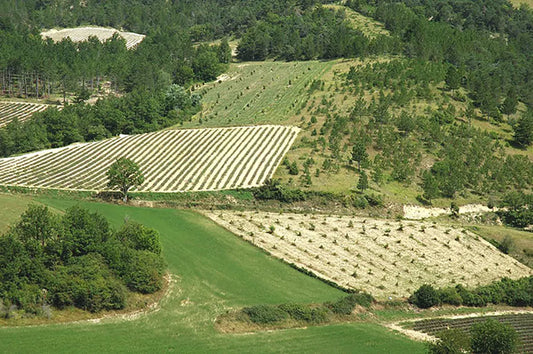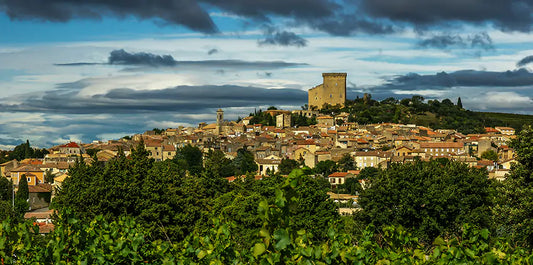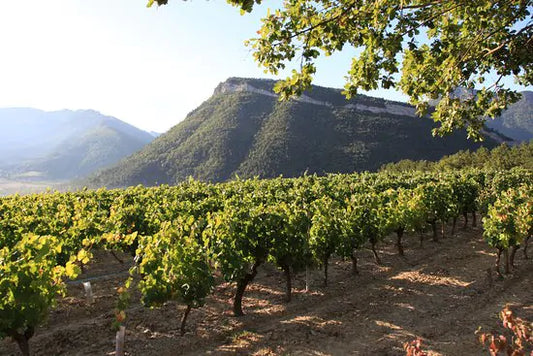Côtes du Rhône: two regions, a multitude of styles


Apart from wines from world-famous plots, the region offers a wide choice of wines at very affordable prices. It is possible to present the Côtes du Rhône AOC in a few words, but this vineyard deserves more attention.
The best-known wines are: Côte-Rôtie, Hermitage, Crozes-Hermitage, Saint-Joseph and Cornas. All these appellations produce white wines from Marsanne and Roussane.
In the northern Côtes du Rhône, located between Vienne and Valence, the only authorized red grape variety is Syrah.
The Condrieu appellation is reserved for the white grape variety “Viognier”. The southern Côtes du Rhône, between Montélimar and Avignon, are characterized by a multitude of AOCs, grape varieties and wine styles. Thus certain Gigondas wines are vinified only from Syrah while in Châteauneuf-du-Pape, the blends can be composed of 13 authorized grape varieties and the AOC Tavel is reserved exclusively for the production of rosé wines .

Following the course of the river, we start with Côte-Rôtie located south of the city of Vienne. On the vertiginous shale hillsides, the vines are cultivated in goblet form. The plots “La Mouline”, “La Landonne” and “La Turque” produce Syrah wines which are among the most sought after and most expensive in the world. Côte-Rôtie appellation wines are produced from Syrah but can be blended with a maximum of 20% Viognier.
Following the course of the Rhône, above the village of Condrieu, lies the Château-Grillet estate. Its 3.8 ha of vines have benefited from their own controlled designation of origin since 1936. Viognier is grown there exclusively. Following the right bank of the Rhône, the AOC Saint-Joseph stretches like an exclamation point with the Cornas AOC which takes stock of it. In Tain, a pedestrian bridge leads on the left bank towards Hermitage. Whoever has the courage to climb to the top of the hill arrives at a chapel which gave the name to one of the most prestigious plots of land in the region “La Chapelle”. For red AOC Hermitage, a blend with a maximum of 15% Marsanne and/or Roussanne is permitted. These two grape varieties are vinified pure or in vintages to produce white wines of character. At the foot of the hill, the AOC Crozes-Hermitage surrounds the AOC Hermitage.

A detour along the banks of the Drôme leads to the AOC Clairette de Die where refreshing sparkling wines are produced using the Clairette grape variety. A variation consists of 75% small-grain white Muscat.
After a short break, our journey takes us to the southern part which begins with the Grignan-les-Adhémar appellation (until 2010 this AOC was called Coteaux de Tricastin) located at the limits of the town of Montélimar, also known for his nougat. This emerging appellation produces the freshest wines of the southern Côtes du Rhône. The main grape varieties, Grenache and Syrah, can be blended with a maximum of 30% Carignan, Mourvèdre and/or Cinsault.
Blending grape varieties is a traditional practice in the southern Côtes du Rhône. However, each appellation has its characteristics. Thus Gigondas is a vintage recognized for its finesse while its neighbor Vacqueyras is appreciated for more full-bodied wines.
The Beaumes-de-Venise appellation only recognizes natural sweet wines produced with small-grain white Muscat.
Rasteau is an AOC that is successful with its wines mutated during fermentation. Matured in used barrels , they are marketed under the name Rasteau Rancio. This appellation also produces quality traditional red wines, along the lines of Châteauneuf-du-Pape. The Côtes du Ventoux, a region known to athletes who follow the Tour de France cycling race, and the Côtes du Luberon are among the largest AOCs . They alone cover an area equivalent to the surface area of the Swiss vineyard. In comparison, Tavel and Lirac are tiny. The first appellation only produces dry rosé wines, generally deep in color tending to a pale red. Among the many authorized grape varieties, Grenache and Cinsault are the most appreciated on these soils of red clay, pebbles and alluvial sand. This rosé, self-proclaimed “best rosé in the world”, was the favorite wine of Louis XIV, the Sun King. The AOC Lirac is one of the southernmost in the Rhône Valley, which operates off the beaten track, known for the quality of its wines. It extends over four communes in the Gard and its wines come in three colors.

A special mention goes to the most precious of southern Côtes du Rhône wines: Châteauneuf-du-Pape . Its name dates back to the 14th century, at the time when the King of France, Philippe IV appointed a French pope. At the time of his appointment, the Archbishop of Bordeaux was crowned in Lyon under the name of Clement V (the Château Pape-Clément owes its name to him) and did not establish his seat in Rome but in Avignon. The designation of Châteauneuf-du-Pape for a wine, however, only dates back to the 19th century. As early as 1923, visionary producers established regulations which served as an example for the establishment of the controlled appellation system. Thus, to have the right to bear the name “Châteauneuf-du-Pape”, a wine must not have received any addition of sugar (chaptalization) and have an alcohol content of at least 12.5% vol.Today alcohol levels of 15.5% or even 17% are not uncommon. The list of 10 originally recognized grape varieties was completed in 1936.
So today 13 grape varieties are authorized; the most important being Grenache, followed by Mourvèdre, Syrah, Cinsault, Muscardin, Vaccarèse, Picpoul, Terret Noir, Counoise, Grenache Blanc, Clairette, Bourboulenc and Roussanne.
The best Châteauneuf-du-Pape are produced on sandy soils covered with rolled pebbles. These retain the heat of the day and release it at night. Traditionally, the grapes are vinified with the stems in order to provide the wine with a tannin structure sufficient to balance the alcoholic richness and concentration of the grapes.
